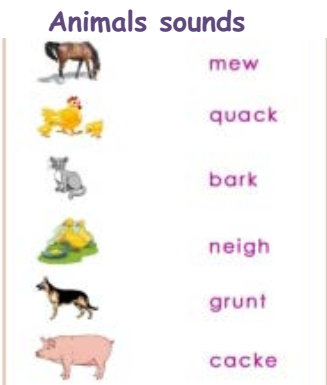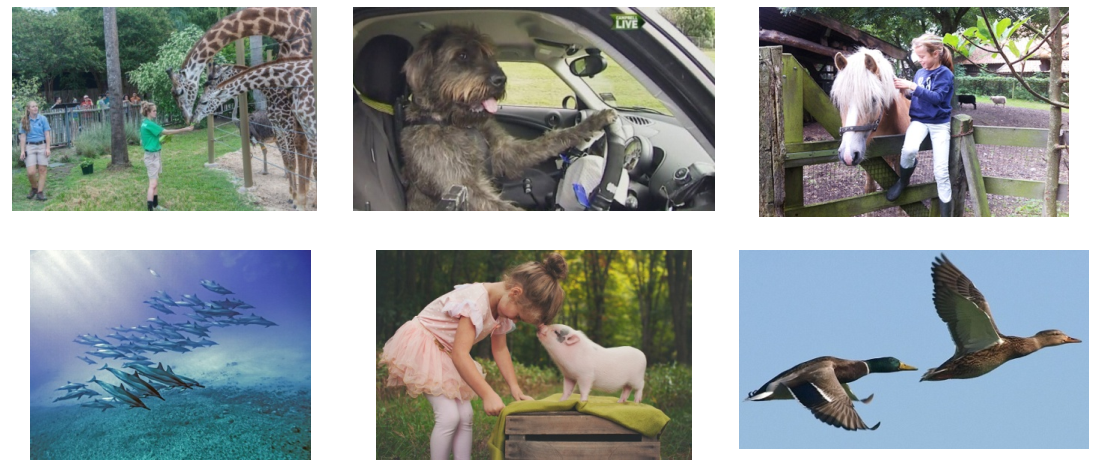| Unit of a long term plan:1 Animals | School: |
| Date: | Teacher’s name: |
| CLASS: 3 | Number present: | absent: |
| Lesson title | Animal Song and Dance 2 |
| Learning objectives(s) that this lesson is contributing to (link to the Subject programme) | 3.1.6.1 understand some specific information and detail of short, supported information or talk on a limited range of general and some curricular topics; 3.2.1.1 make basic statements which provide personal information on a limited range of general topics; 3.3.1.1recognise, identify and sound with support a limited range of familiar words in simple sentences |
| Lesson objectives | All leaners will be able to: Read and understand the text. Most leaners will be able to: Answer the questions; Some leaners will be able to: Understand the main idea of the text and ask questions; |
| Assessment criteria | Identify specific information and details in supported talk on general and some curricular topics |
| Level of thinking skills | Applying world knowledge. Combining ideas to farm a new whole. Creative thingking |
| Values links | Respect and cooperation by: Listening to the teacher Listening to each other Take turns Encourage each other Helping each other |
| Cross-curricular links | Kazakh language and literature, Russian language and literature (naming things in Kazakh, Russian and English). Art.How many legs? ( Maths). Zoo in the USA and Kazakhstan |
| Previous learning 3 m | What was your homework? To speak about…….. Are you ready? Yes we are .Then let’s answer the questions. Hot ball or basketball game |
| Plan |
| Planned timings | Planned activities (replace the notes below with your planned activities)
| Resources |
| Start 4 min | Get students ready to the class by greeting them, asking questions about weather: What is the weather like today? Pupils, go to the blackboard and make a circle. Lets say good wishes for each-other. Dear Nurasyl, I wish you health and wealth , be happy! And now pupils lets gather into 4 groups: winter,spring,summer,autumn. Please, take these cards and sit according to the pictures. Learning and lesson objectives are introduced. |
|
| Middle 25-30min | Animal song and dance
Pre-learning
(W) Learners learn and sing a song about animals.
Activity 1
(W) Learners learn words of animals. Game: Don't Drop It! Have all
learners sit in a circle. Use a ball (or even a plastic animal) and toss it to
one S. But you must say one animal word as you pass. The S then throws to another S and says a different animal word. If the student you
threw it to drops it, he/she is out. Also, if the S can't think of an animal
word within a few seconds he/she is out. The game keeps going until you have one winner. Activity 2
Learners make Animals classification - Movements
Animals move in many ways: Fly, swim, crawl, run , walk, hop,
climb. Directions: Sort the animal cards by how each animal moves. Then write the names of the animals under the correct heading Task. Listen to the question and answer it.
1. What can a dog do?
2. Did you hear a dog bark in the street?
3. Can the lion fly?
4. Where can you see a lion?
5. What animal can swim?
6. Can the frog bark?
7. Can the bird roar?
8. What sound can a kitten make?
 Descriptor: A learner • answers the questions correctly Task. Look at the picture and say what people or animals are doing. Make up dialogue..
Example: The girl is feeding giraffes.
Is she feeding a monkey? –No, she isn’t.
 Descriptor: A learner
• makes up sentences;
• uses present continuous forms correctly;
• gives the short answers appropriately | Cartoon-type images of different animals Recordings of animal songs:
Way Ahead Foundation
Course by PrinthaEllis and
Mary Bowen, p.94
http://www.youtube. com/wat
ch?v=fv4kp4ZnSuE&list=SP
86DFB681262D75CA
http://www.youtube. com/wat
ch?v=7WXS16-X0c0
Sound library:
http://www.seaworld.org/ani
mal-info/sound-library/
|
| End 4 min | Giving feedback orally. Ask learners to rise their worksheets and check how many words they could identify and if they are able to: Name 6 words of food correctly Say a sentence correctly Say 2 sentences correctly Leaners:- show green sticker, if they liked the lesson -show yellow sticker, if they understand the lesson -show red sticker, if they understand nothing Teacher: -assesses by colors or smiles. Home task: Learn by heart new words |
|
| Additional information |
| Differentiation – how do you plan to give more support? How do you plan to challenge the more able learners? | Assessment – how are you planning to check learners’ learning? | Health and safety check
|
| Task 1. Weaker learners can identify “True” or “False” after reading. More able learners analyzed given text and retold. Task 2. Support questions will be given to the weaker learners to identify the answer correctly and talented students will answer unexpected comments. | Leaners will be formatively assessed after each task by green and red stars depending on the difficulty of the task and teacher’s feedback at the end of the lesson. | Health saving technologies.
|
| Reflection Were the lesson objectives/learning objectives realistic? Did all the learners achieve the lesson objectives/ learning objectives? If not, why? Did my planned differentiation work well? Did I stick to timings? What changes did I make from my plan and why? | Use the space below to reflect on your lesson. Answer the most relevant questions from the box on the left about your lesson.
|
|
|
| Summary evaluation What two things went really well (consider both teaching and learning)? 1: 2: What two things would have improved the lesson (consider both teaching and learning)? 1: 2: What have I learned from this lesson about the class or individuals that will inform my next lesson? |



















